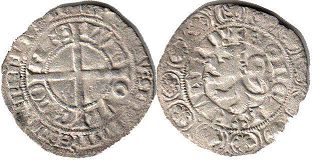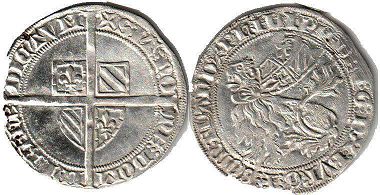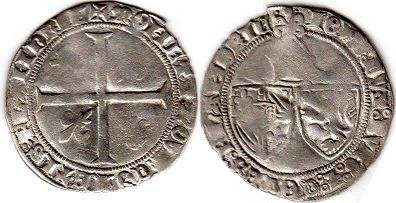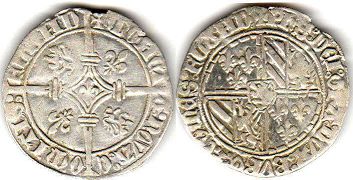Coins of Flanders - catalog with values
County of Flanders (862-1794)
Grosch
Louis II de Maele (1346-1384)

Grosch no date
silver
LVDOVIC COMES / SIT NOME DNI BENEDICTVM
MONETA FLAND
Coin value ~ 50-60 USD
Philip II the Bold duke of Burgundy (1384-1404)

Double grosch no date (1389)
silver
SIT NOME DOMINI BENEDICTVM
PHILIPP DEI G DX BVRG COM FLAND
Coin value ~ 80-100 USD
John the Fearless duke of Burgundy (1404-1419)

Double grosch no date (1409)
silver
MONETA NOVA COMETIS FLANDRIE
IOHS DVX BVRG COMES FLANDRIE
Coin value ~ 80-100 USD
Philip III the Good duke of Burgundy (1419-1467)

Double grosch no date
silver
MONETA NOVA COMITIS FLAND
PHS DEI GRA DVX BVRG Z COMES FLAND
Coin value ~ 80-100 USD
Other Belgian coins
Belgian States
Burgundian Netherlands (1482-1506)
Spanish Netherlands (1506-1713)
Austrian Netherlands (1714-1797)
Belgian Kingdom
Belgian franc coinage (1831-2001) - all coins
Albert II (1993-2013) - franc coinage (1993-2001)
Albert II (1993-2013) - euro coinage (2002-2013)
Costs of Flanders coins in this catalog approximate and indicated specifically for the coin shown in the picture.
I do not buy or sell coins - this is just a catalog.

